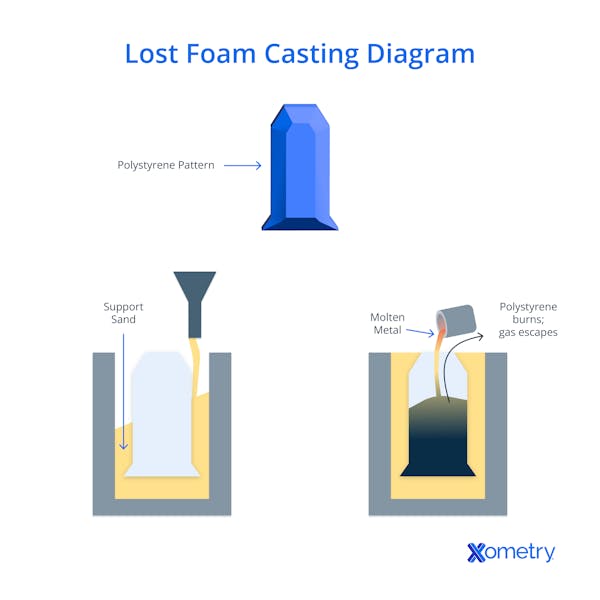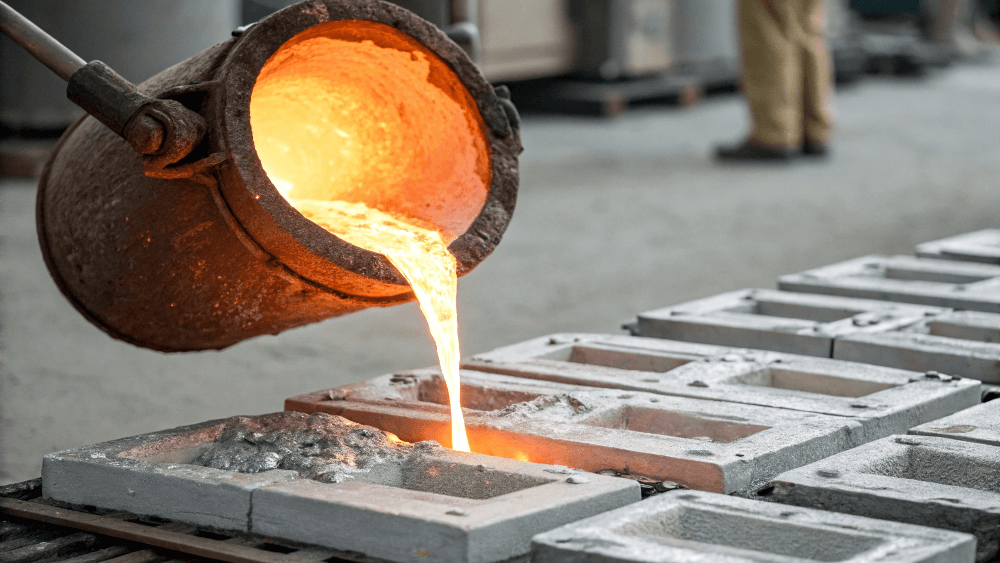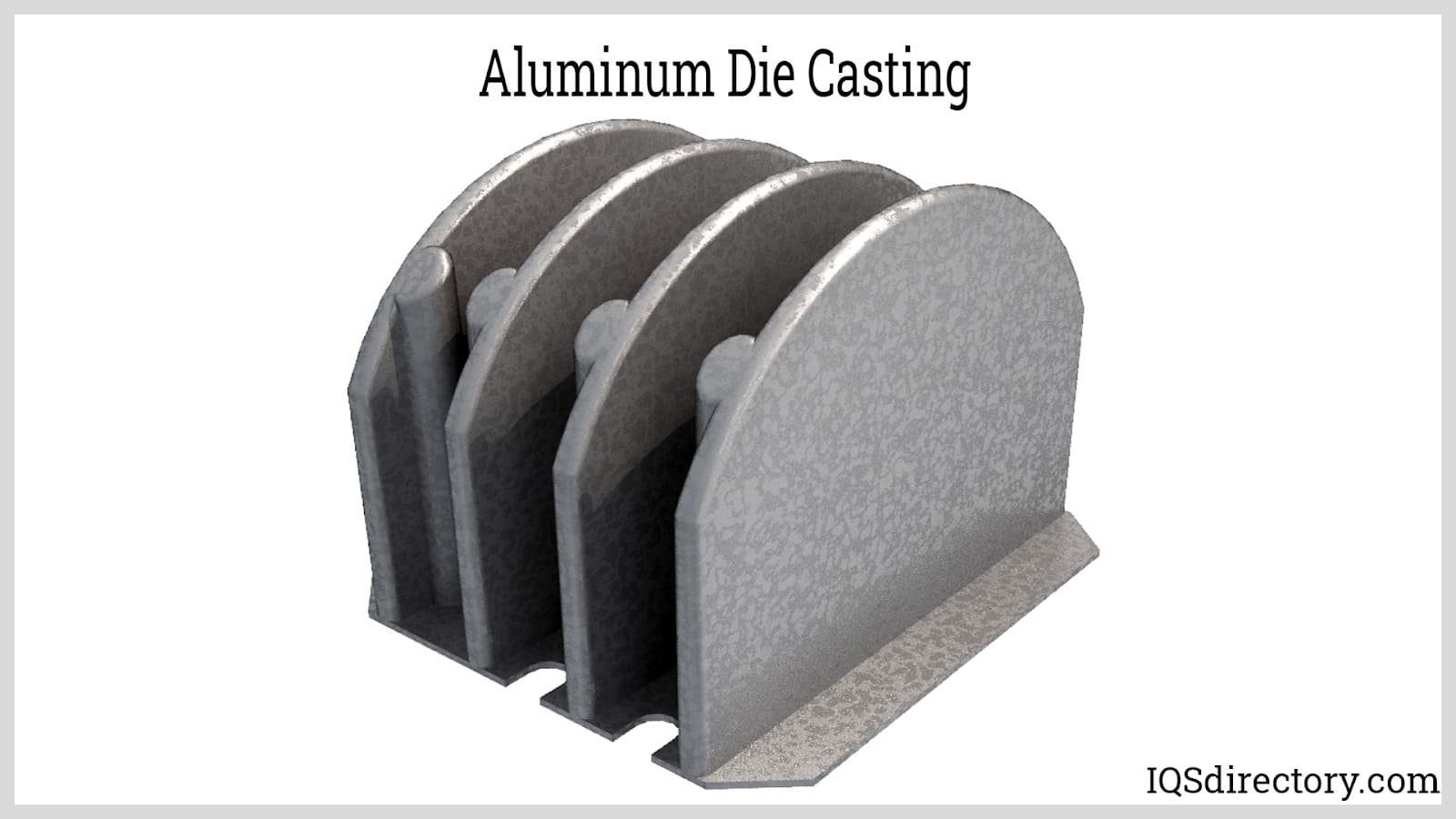Understanding the role of Aluminum Foundry Wisconsin in casting efficiency
Comprehending the Advantages and Innovations in the Aluminum Foundry Market
The Aluminum Foundry market plays an important role in contemporary manufacturing. Its lightweight residential or commercial properties notably enhance fuel efficiency, especially in vehicle and aerospace fields. On top of that, Aluminum's resistance to deterioration assurances durability in numerous applications. As the market progresses, developments such as advanced recycling and additive manufacturing are improving manufacturing techniques. Exploring these innovations reveals not just the benefits but also the obstacles ahead for Aluminum foundries in a quickly altering market.
The Lightweight Advantage of Aluminum
Aluminum's lightweight nature provides considerable advantages across different sectors, specifically in production and transport. Its reduced thickness enables the production of elements that are simpler to manage and set up, causing reduced labor expenses and boosted effectiveness. In the automobile sector, lighter vehicles contribute to boosted gas economic climate and lower emissions, aligning with worldwide sustainability goals. Likewise, in aerospace, the use of Aluminum lowers the general weight of airplane, which is important for boosting performance and minimizing functional prices.
Additionally, Aluminum's lightweight homes facilitate ingenious designs that were previously impossible with larger products. This adaptability enables suppliers to create intricate shapes and structures while maintaining architectural integrity. Generally, the light-weight advantage of Aluminum not just enhances item efficiency but additionally drives improvements in modern technology and layout, making it a favored product in various applications.
Rust Resistance and Sturdiness
The Aluminum Foundry industry is renowned for producing materials with premium rust resistance, making them ideal for different applications. This residential or commercial property, incorporated with improved architectural honesty, adds to the lasting performance advantages that Aluminum elements use. As a result, markets significantly depend on Aluminum to meet requiring ecological problems without endangering quality.
Superior Rust Resistance
While different steels encounter significant difficulties from environmental aspects, Aluminum stands apart for its remarkable deterioration resistance, making it a recommended selection in numerous applications. This property is primarily due to a natural oxide layer that bases on the Aluminum surface, offering a barrier versus wetness and destructive agents. Unlike other metals that may rust or break down over time, Aluminum maintains its integrity also in extreme environments, such as coastal areas or commercial setups. Furthermore, its light-weight nature integrated with rust resistance makes it optimal for applications in aerospace, automotive, and marine sectors. On the whole, Aluminum's extraordinary longevity not just enhances item longevity but additionally minimizes upkeep expenses, providing an engaging benefit for manufacturers and consumers alike.
Enhanced Architectural Honesty
Engineers and developers increasingly recognize the significance of boosted structural honesty in modern applications, where both rust resistance and sturdiness are critical. Aluminum alloys, understood for their light-weight homes, likewise display remarkable resistance to corrosion, making them ideal for extreme environments. The ingenious techniques employed in the Aluminum Foundry industry contribute significantly to creating elements with boosted toughness. Advanced casting procedures and alloy make-ups are tailored to satisfy particular performance requirements, ensuring that structures can withstand severe conditions without endangering stability. Additionally, surface area therapies and coverings improve the life expectancy of Aluminum items, better reducing damage with time. This concentrate on boosted architectural integrity not just expands the usability of materials however also lowers maintenance prices, solidifying Aluminum's setting as a product of selection in various markets.
Lasting Performance Conveniences
Resilient efficiency in Aluminum parts is greatly credited to their exceptional corrosion resistance and resilience. Unlike lots of metals, Aluminum normally forms a safety oxide layer, which avoids corrosion and deterioration in different environments, including marine and industrial setups. This integral building substantially expands the life-span of Aluminum products, reducing maintenance and substitute costs. On top of that, the lightweight nature of Aluminum boosts its applicability across markets without jeopardizing strength. The product's resistance to use and tear also adds to its integrity popular applications, making it a suitable selection for auto, aerospace, and building and construction markets. As sectors progressively prioritize sustainability and long life, Aluminum's performance advantages line up with modern-day engineering requirements, strengthening its function in innovative production procedures.
Environmental Impact and Sustainability
 As the Aluminum Foundry industry develops, it increasingly prioritizes ecological effect and sustainability, identifying the need for liable practices when faced with environment adjustment. Efforts to decrease waste and energy consumption are at the forefront, with numerous shops adopting reusing efforts to redeem Aluminum scrap. This not just lowers basic material usage however additionally notably reduces energy expenditure, as recycled Aluminum needs only a fraction of the power contrasted to key production.
As the Aluminum Foundry industry develops, it increasingly prioritizes ecological effect and sustainability, identifying the need for liable practices when faced with environment adjustment. Efforts to decrease waste and energy consumption are at the forefront, with numerous shops adopting reusing efforts to redeem Aluminum scrap. This not just lowers basic material usage however additionally notably reduces energy expenditure, as recycled Aluminum needs only a fraction of the power contrasted to key production.Improvements in exhausts control innovations are being applied to lower air pollutants, straightening procedures with more stringent ecological regulations. Foundries are also exploring alternate power resources, such as solar and wind, to power their facilities sustainably. By fostering collaboration with stakeholders, the market aims to develop innovative services that improve environmental stewardship. Collectively, these initiatives highlight a commitment to minimizing the Aluminum Foundry's carbon impact while promoting a circular economic climate within the production market.
Advanced Manufacturing Techniques
 Reinventing production procedures, the Aluminum Foundry market is significantly integrating advanced manufacturing strategies to improve effectiveness and accuracy. Methods such as computer system numerical control (CNC) machining and additive production have actually emerged as vital components in maximizing manufacturing process. CNC machining enables high-precision part fabrication, considerably minimizing product waste and production time. Additive manufacturing opens up new opportunities for intricate geometries and lightweight styles that were previously hard to accomplish.
Reinventing production procedures, the Aluminum Foundry market is significantly integrating advanced manufacturing strategies to improve effectiveness and accuracy. Methods such as computer system numerical control (CNC) machining and additive production have actually emerged as vital components in maximizing manufacturing process. CNC machining enables high-precision part fabrication, considerably minimizing product waste and production time. Additive manufacturing opens up new opportunities for intricate geometries and lightweight styles that were previously hard to accomplish.In addition, the implementation of automation and robotics in Aluminum shops simplifies procedures, decreases human error, and boosts worker security. These technologies assist in a more receptive manufacturing environment, making it possible for makers to adapt rapidly to market demands. The integration of advanced simulation software application better boosts the design and testing phases, leading to premium product top quality. Jointly, these strategies not just improve functional effectiveness but also foster technology, positioning the Aluminum Foundry market at the leading edge of contemporary production.
Developments in Recycling Procedures
The Aluminum Foundry sector is not just progressing in producing techniques however is also making significant strides in reusing procedures. Developments are emerging to enhance the efficiency of reusing methods, decreasing energy intake and enhancing sustainability. Advanced arranging modern technologies, such as computerized optical sorting, allow the identification and splitting up of Aluminum from various other products with high precision. This leads to a greater high quality of recycled Aluminum, which is vital for maintaining the honesty of the final items.
In addition, closed-loop recycling systems are being carried out, enabling producers to reuse Aluminum scrap within their very own production procedures. This lessens waste and promotes a round economic climate. Additionally, research right into new recycling strategies, such as hydrometallurgical processes, supplies the possibility for recuperating Aluminum from intricate waste streams. These advancements not only add to minimizing the carbon footprint of the Aluminum Foundry market yet likewise reinforce its financial viability in a significantly environmentally aware market.
Applications Across Different Industries
Numerous markets are increasingly identifying the flexibility and benefits of Aluminum Foundry products, bring about extensive applications throughout fields such as automobile, building and construction, consumer, and aerospace products. In the vehicle sector, Aluminum spreadings add to light-weight vehicle designs, improving fuel performance and performance. Aerospace makers make use of Aluminum parts for their strength-to-weight ratio, essential for aircraft structures and components.
In construction, Aluminum is favored for its resilience and resistance to rust, making it optimal for home window structures, roofing, and structural assistances. Durable goods also benefit from Aluminum Foundry products, as seen in kitchenware, electronic devices, and packaging, where lightweight and recyclable helpful resources materials are vital.
The adaptability of Aluminum Foundry techniques enables weblink intricate designs and precise requirements, accommodating the varied needs of these industries. Because of this, Aluminum Foundry items are ending up being indispensable to modern-day production procedures throughout various fields.
Future Patterns in Aluminum Foundries
As industries proceed to develop, Aluminum foundries are positioned to accept several crucial patterns that promise to boost effectiveness and sustainability. One famous fad is the boosting adoption of electronic modern technologies, consisting of automation and expert system, which streamline procedures and enhance quality assurance. In addition, the press towards lasting techniques is leading factories to buy reusing technologies, significantly minimizing waste and energy usage.
 An additional emerging pattern is the use of sophisticated alloys and products, satisfying the growing need for resilient and lightweight elements throughout various markets (Aluminum Foundry). The assimilation of additive production techniques is expected to change component design, offering personalization and lowering lead times.
An additional emerging pattern is the use of sophisticated alloys and products, satisfying the growing need for resilient and lightweight elements throughout various markets (Aluminum Foundry). The assimilation of additive production techniques is expected to change component design, offering personalization and lowering lead times.Cooperation with research institutions is additionally anticipated to drive innovation, as foundries look for to create new processes and materials. Aluminum Foundry. Jointly, these trends indicate a transformative future for the Aluminum Foundry industry, aligning with broader objectives of sustainability and performance
Regularly Asked Inquiries
What Are the Regular Expenses Connected With Aluminum Foundry Manufacturing?
The regular prices related to Aluminum Foundry manufacturing consist of raw products, labor, energy, devices upkeep, and overhead expenses. These factors collectively affect the total monetary investment required for efficient Aluminum casting procedures.
Just How Does Aluminum Contrast to Other Metals in Toughness?
Aluminum, while lighter than numerous steels, shows impressive strength-to-weight proportions. Contrasted to steel, Aluminum is less strong yet supplies superb rust resistance, making it a desirable selection in applications where weight and resilience are important.
What Safety Actions Remain In Area in Aluminum Foundries?
Precaution in Aluminum foundries commonly include mandatory individual protective tools, air flow systems to regulate fumes, routine tools upkeep, training programs for employees, and adherence to strict safety and security guidelines to minimize dangers connected with molten steel handling.
Exactly How Is Quality Assurance Managed in Aluminum Spreading Processes?
Quality assurance in Aluminum casting procedures includes strenuous assessments at different stages, including basic material examination, process surveillance, and last item testing. Strategies such as statistical procedure control and non-destructive testing warranty adherence to industry criteria.
What Accreditations Are Crucial for Aluminum Foundry Vendors?
The value of certifications for Aluminum Foundry suppliers consists of ISO 9001 for high quality monitoring, ISO 14001 see for environmental administration, and industry-specific standards like ASTM and SAE, making certain compliance, security, and integrity in producing procedures.
The Aluminum Foundry industry plays an essential function in modern manufacturing. The Aluminum Foundry market is renowned for generating products with superior rust resistance, making them perfect for numerous applications. Revolutionizing production processes, the Aluminum Foundry market is significantly integrating advanced manufacturing methods to improve efficiency and precision. The Aluminum Foundry market is not only advancing in making techniques however is likewise making considerable strides in reusing processes. As markets continue to develop, Aluminum factories are poised to embrace several key trends that promise to enhance performance and sustainability.